Analysis of Business Operations and Structures in the UK
VerifiedAdded on 2020/12/10
|15
|2170
|319
Report
AI Summary
This report provides a detailed overview of business operations in the UK, encompassing both private and public sectors. It begins by describing different types of organizations, including sole traders, partnerships, limited companies, franchises, and charities in the private sector, and central and local government entities within the public sector. The report further explores the impact of local, national, and global economic environments on businesses, using Heinz as a case study. It emphasizes the importance of accounting for successful business planning, budgeting, and cost monitoring, alongside the various functions of an HR department, such as training, recruitment, and employee relations. Additionally, the report delves into interpreting accounting information through profit and loss accounts, the stages of team development, motivation theories, leadership styles, and the impact of customer service on business success, concluding with the advantages of business profiling. The report also provides an analysis of employment legislation, including the Equality and Discrimination Act 2010 and the Employment Rights Act.
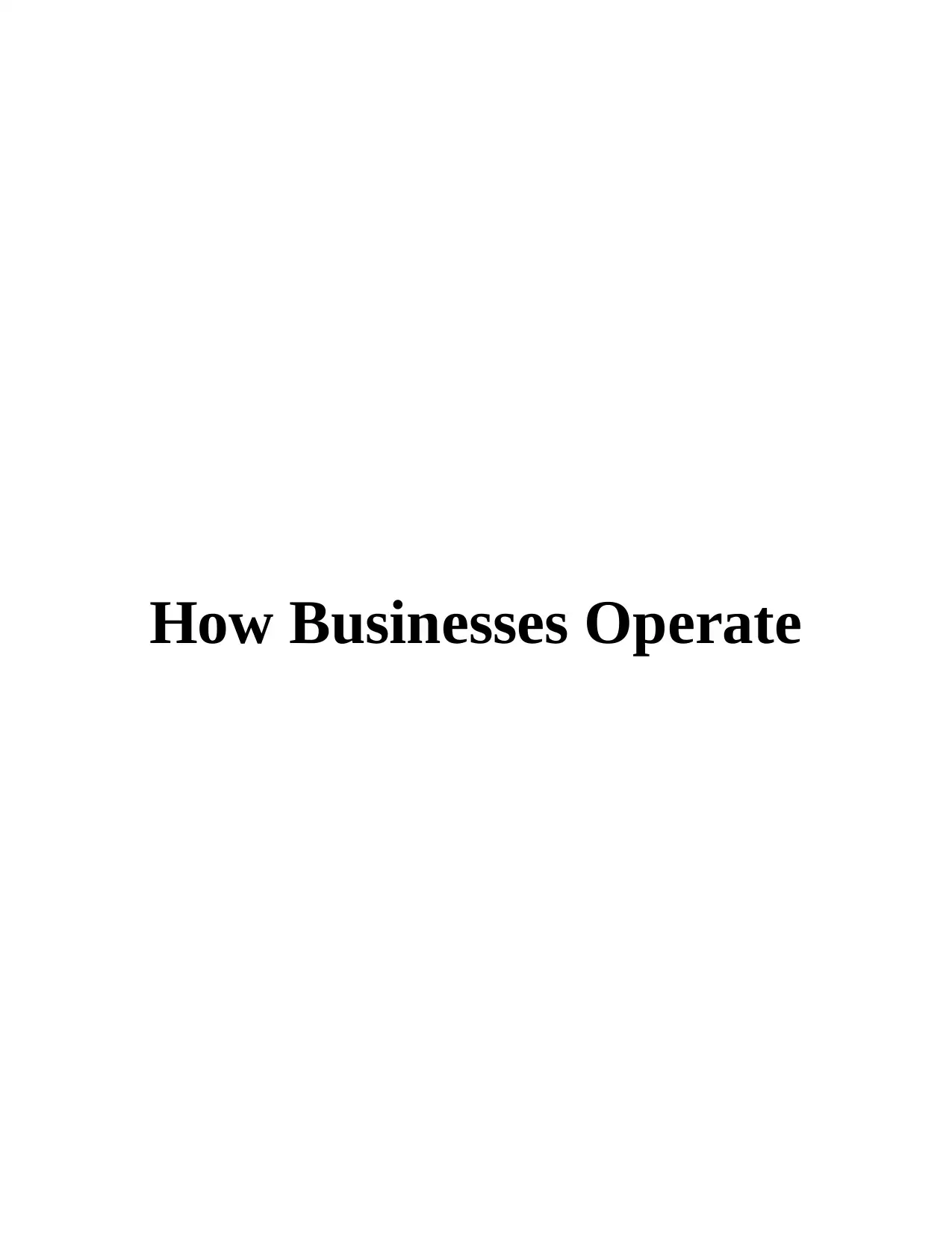
How Businesses Operate
Paraphrase This Document
Need a fresh take? Get an instant paraphrase of this document with our AI Paraphraser
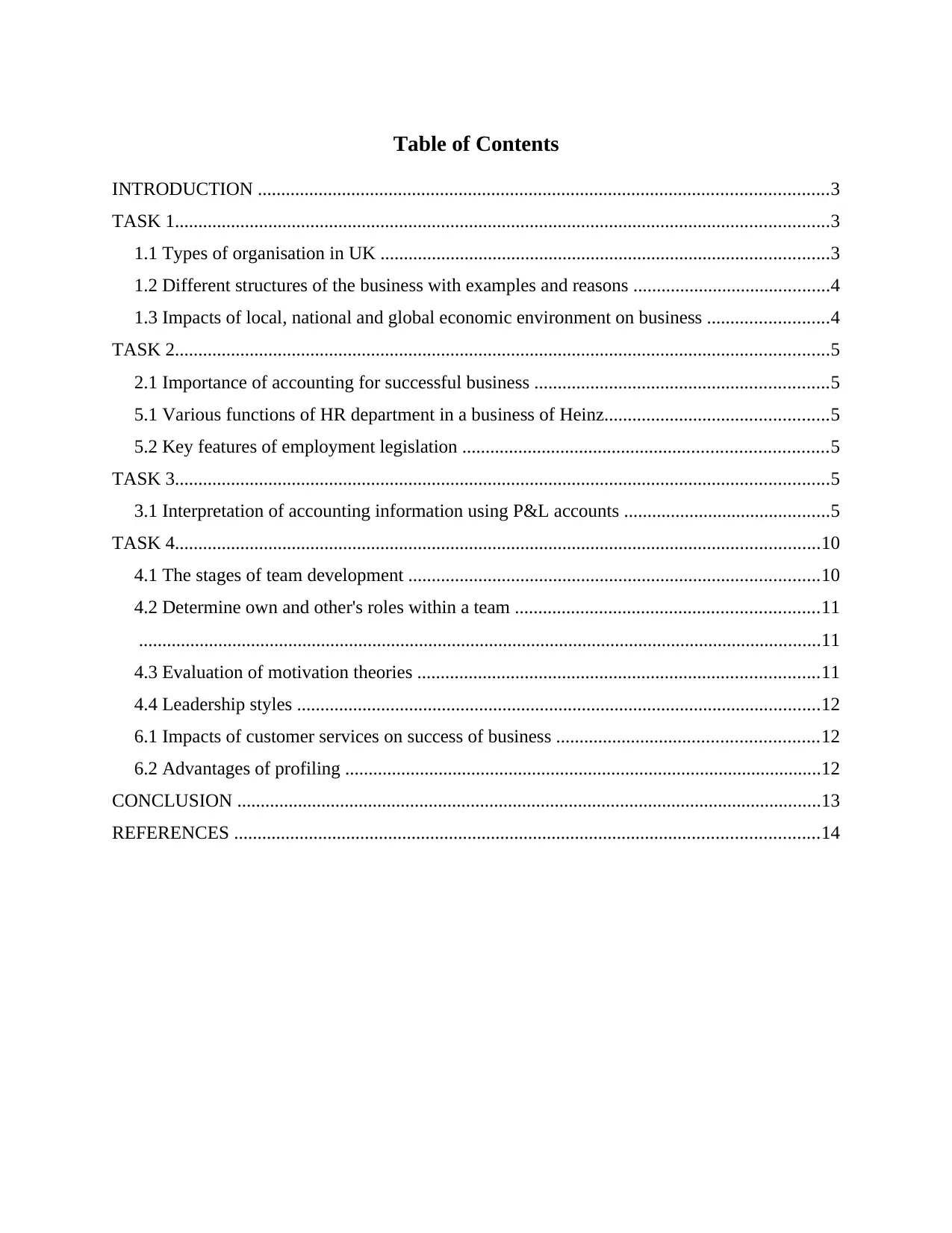
Table of Contents
INTRODUCTION ..........................................................................................................................3
TASK 1............................................................................................................................................3
1.1 Types of organisation in UK ................................................................................................3
1.2 Different structures of the business with examples and reasons ..........................................4
1.3 Impacts of local, national and global economic environment on business ..........................4
TASK 2............................................................................................................................................5
2.1 Importance of accounting for successful business ...............................................................5
5.1 Various functions of HR department in a business of Heinz................................................5
5.2 Key features of employment legislation ..............................................................................5
TASK 3............................................................................................................................................5
3.1 Interpretation of accounting information using P&L accounts ............................................5
TASK 4..........................................................................................................................................10
4.1 The stages of team development ........................................................................................10
4.2 Determine own and other's roles within a team .................................................................11
..................................................................................................................................................11
4.3 Evaluation of motivation theories ......................................................................................11
4.4 Leadership styles ................................................................................................................12
6.1 Impacts of customer services on success of business ........................................................12
6.2 Advantages of profiling ......................................................................................................12
CONCLUSION .............................................................................................................................13
REFERENCES .............................................................................................................................14
INTRODUCTION ..........................................................................................................................3
TASK 1............................................................................................................................................3
1.1 Types of organisation in UK ................................................................................................3
1.2 Different structures of the business with examples and reasons ..........................................4
1.3 Impacts of local, national and global economic environment on business ..........................4
TASK 2............................................................................................................................................5
2.1 Importance of accounting for successful business ...............................................................5
5.1 Various functions of HR department in a business of Heinz................................................5
5.2 Key features of employment legislation ..............................................................................5
TASK 3............................................................................................................................................5
3.1 Interpretation of accounting information using P&L accounts ............................................5
TASK 4..........................................................................................................................................10
4.1 The stages of team development ........................................................................................10
4.2 Determine own and other's roles within a team .................................................................11
..................................................................................................................................................11
4.3 Evaluation of motivation theories ......................................................................................11
4.4 Leadership styles ................................................................................................................12
6.1 Impacts of customer services on success of business ........................................................12
6.2 Advantages of profiling ......................................................................................................12
CONCLUSION .............................................................................................................................13
REFERENCES .............................................................................................................................14
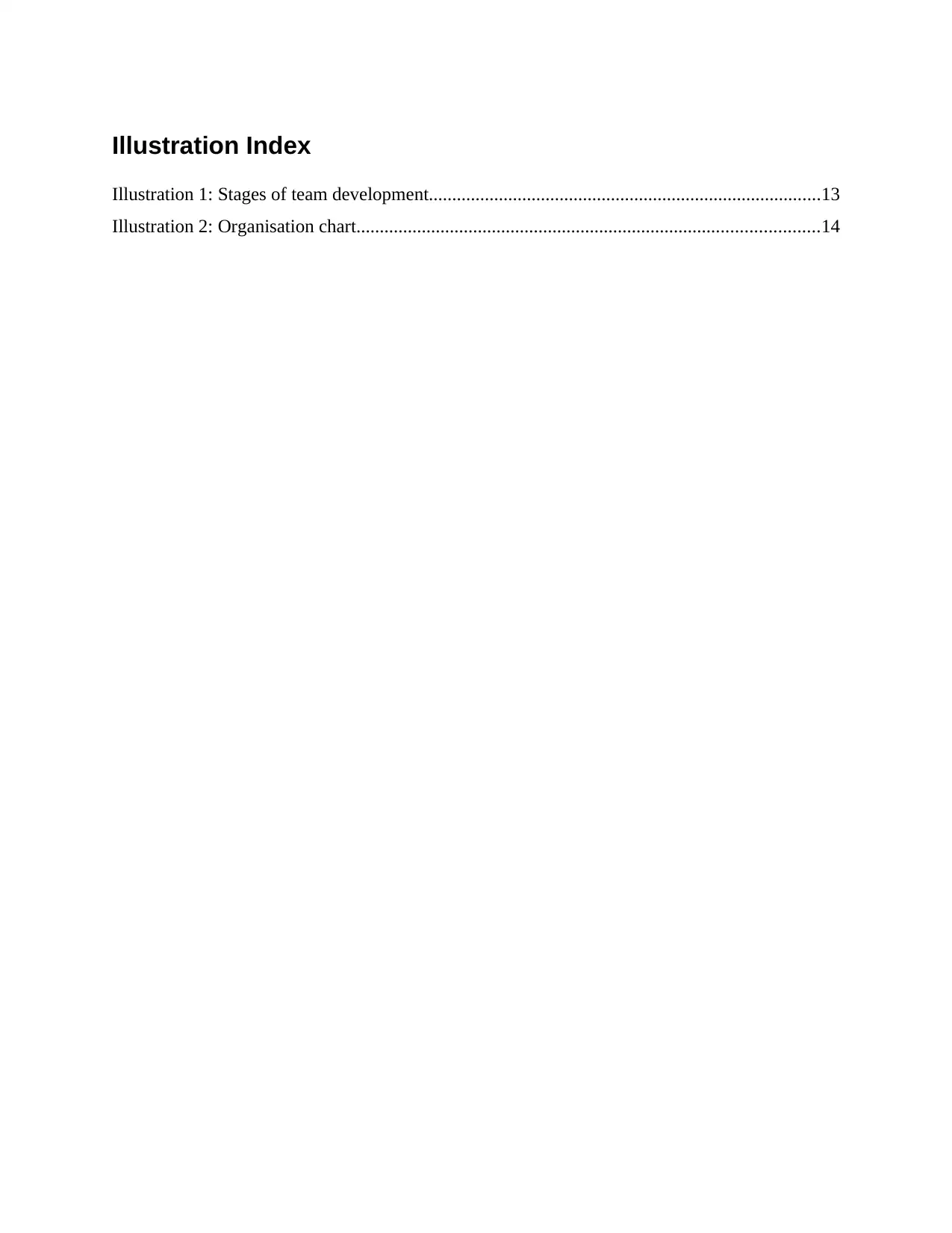
Illustration Index
Illustration 1: Stages of team development....................................................................................13
Illustration 2: Organisation chart...................................................................................................14
Illustration 1: Stages of team development....................................................................................13
Illustration 2: Organisation chart...................................................................................................14
⊘ This is a preview!⊘
Do you want full access?
Subscribe today to unlock all pages.

Trusted by 1+ million students worldwide
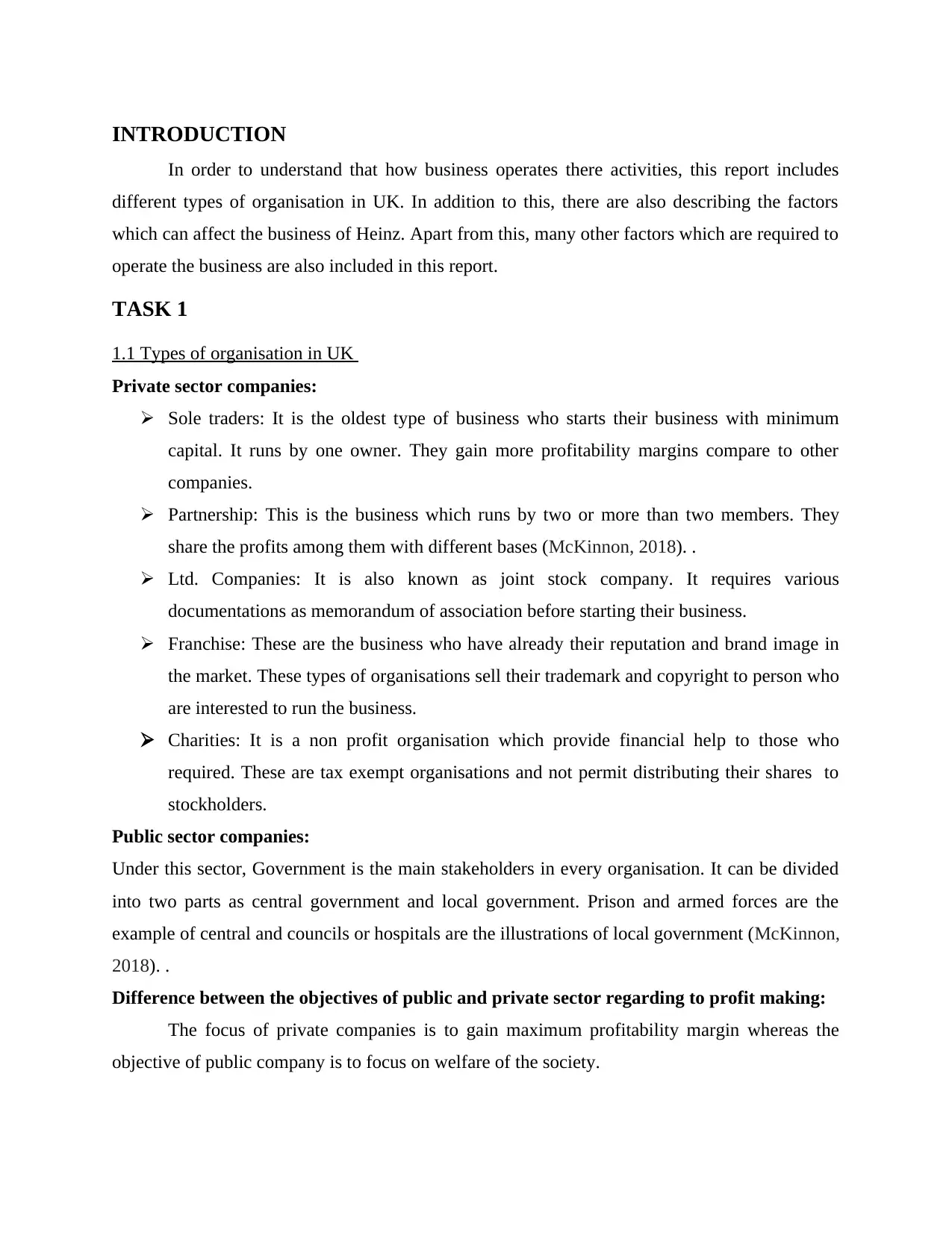
INTRODUCTION
In order to understand that how business operates there activities, this report includes
different types of organisation in UK. In addition to this, there are also describing the factors
which can affect the business of Heinz. Apart from this, many other factors which are required to
operate the business are also included in this report.
TASK 1
1.1 Types of organisation in UK
Private sector companies:
Sole traders: It is the oldest type of business who starts their business with minimum
capital. It runs by one owner. They gain more profitability margins compare to other
companies.
Partnership: This is the business which runs by two or more than two members. They
share the profits among them with different bases (McKinnon, 2018). .
Ltd. Companies: It is also known as joint stock company. It requires various
documentations as memorandum of association before starting their business.
Franchise: These are the business who have already their reputation and brand image in
the market. These types of organisations sell their trademark and copyright to person who
are interested to run the business.
Charities: It is a non profit organisation which provide financial help to those who
required. These are tax exempt organisations and not permit distributing their shares to
stockholders.
Public sector companies:
Under this sector, Government is the main stakeholders in every organisation. It can be divided
into two parts as central government and local government. Prison and armed forces are the
example of central and councils or hospitals are the illustrations of local government (McKinnon,
2018). .
Difference between the objectives of public and private sector regarding to profit making:
The focus of private companies is to gain maximum profitability margin whereas the
objective of public company is to focus on welfare of the society.
In order to understand that how business operates there activities, this report includes
different types of organisation in UK. In addition to this, there are also describing the factors
which can affect the business of Heinz. Apart from this, many other factors which are required to
operate the business are also included in this report.
TASK 1
1.1 Types of organisation in UK
Private sector companies:
Sole traders: It is the oldest type of business who starts their business with minimum
capital. It runs by one owner. They gain more profitability margins compare to other
companies.
Partnership: This is the business which runs by two or more than two members. They
share the profits among them with different bases (McKinnon, 2018). .
Ltd. Companies: It is also known as joint stock company. It requires various
documentations as memorandum of association before starting their business.
Franchise: These are the business who have already their reputation and brand image in
the market. These types of organisations sell their trademark and copyright to person who
are interested to run the business.
Charities: It is a non profit organisation which provide financial help to those who
required. These are tax exempt organisations and not permit distributing their shares to
stockholders.
Public sector companies:
Under this sector, Government is the main stakeholders in every organisation. It can be divided
into two parts as central government and local government. Prison and armed forces are the
example of central and councils or hospitals are the illustrations of local government (McKinnon,
2018). .
Difference between the objectives of public and private sector regarding to profit making:
The focus of private companies is to gain maximum profitability margin whereas the
objective of public company is to focus on welfare of the society.
Paraphrase This Document
Need a fresh take? Get an instant paraphrase of this document with our AI Paraphraser
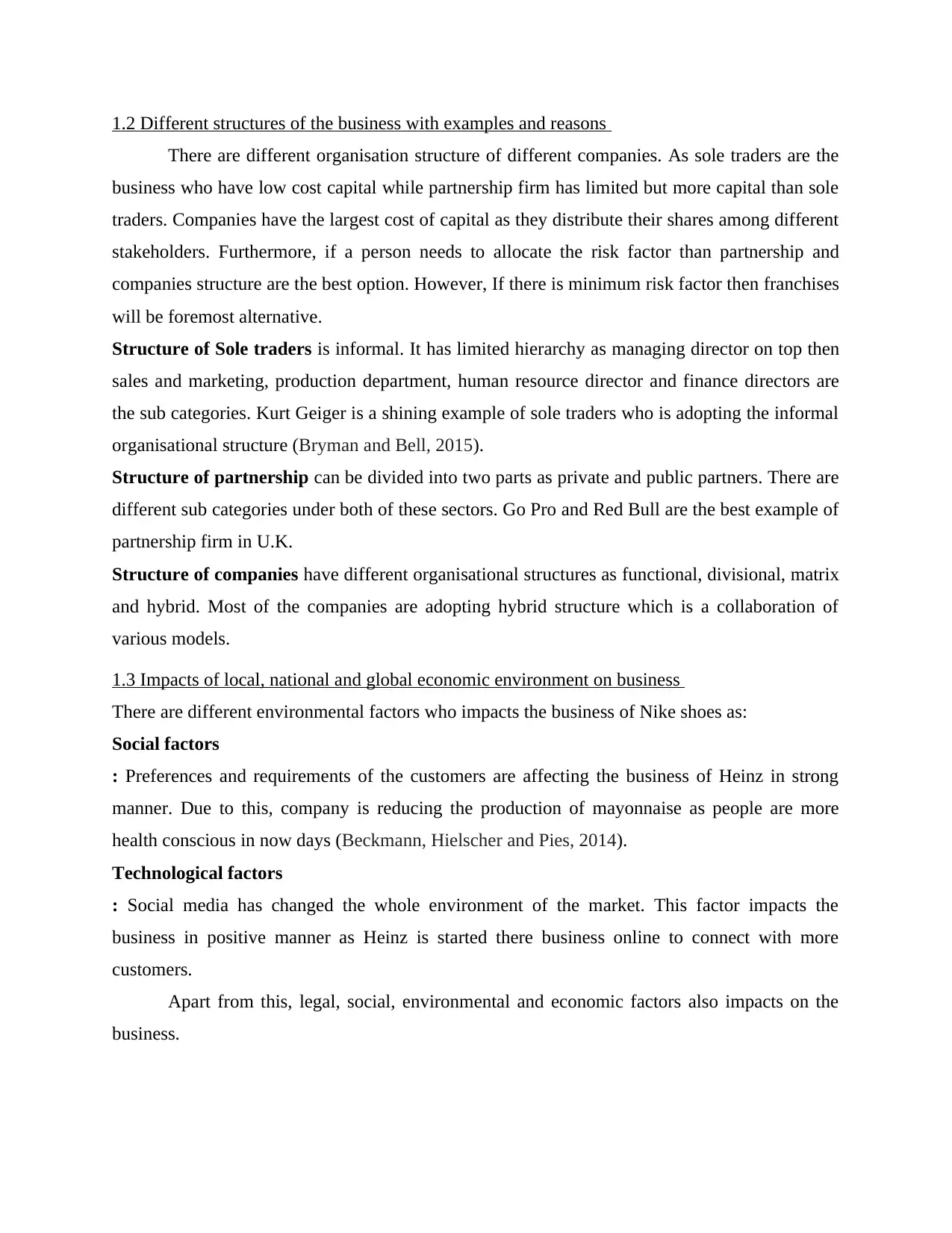
1.2 Different structures of the business with examples and reasons
There are different organisation structure of different companies. As sole traders are the
business who have low cost capital while partnership firm has limited but more capital than sole
traders. Companies have the largest cost of capital as they distribute their shares among different
stakeholders. Furthermore, if a person needs to allocate the risk factor than partnership and
companies structure are the best option. However, If there is minimum risk factor then franchises
will be foremost alternative.
Structure of Sole traders is informal. It has limited hierarchy as managing director on top then
sales and marketing, production department, human resource director and finance directors are
the sub categories. Kurt Geiger is a shining example of sole traders who is adopting the informal
organisational structure (Bryman and Bell, 2015).
Structure of partnership can be divided into two parts as private and public partners. There are
different sub categories under both of these sectors. Go Pro and Red Bull are the best example of
partnership firm in U.K.
Structure of companies have different organisational structures as functional, divisional, matrix
and hybrid. Most of the companies are adopting hybrid structure which is a collaboration of
various models.
1.3 Impacts of local, national and global economic environment on business
There are different environmental factors who impacts the business of Nike shoes as:
Social factors
: Preferences and requirements of the customers are affecting the business of Heinz in strong
manner. Due to this, company is reducing the production of mayonnaise as people are more
health conscious in now days (Beckmann, Hielscher and Pies, 2014).
Technological factors
: Social media has changed the whole environment of the market. This factor impacts the
business in positive manner as Heinz is started there business online to connect with more
customers.
Apart from this, legal, social, environmental and economic factors also impacts on the
business.
There are different organisation structure of different companies. As sole traders are the
business who have low cost capital while partnership firm has limited but more capital than sole
traders. Companies have the largest cost of capital as they distribute their shares among different
stakeholders. Furthermore, if a person needs to allocate the risk factor than partnership and
companies structure are the best option. However, If there is minimum risk factor then franchises
will be foremost alternative.
Structure of Sole traders is informal. It has limited hierarchy as managing director on top then
sales and marketing, production department, human resource director and finance directors are
the sub categories. Kurt Geiger is a shining example of sole traders who is adopting the informal
organisational structure (Bryman and Bell, 2015).
Structure of partnership can be divided into two parts as private and public partners. There are
different sub categories under both of these sectors. Go Pro and Red Bull are the best example of
partnership firm in U.K.
Structure of companies have different organisational structures as functional, divisional, matrix
and hybrid. Most of the companies are adopting hybrid structure which is a collaboration of
various models.
1.3 Impacts of local, national and global economic environment on business
There are different environmental factors who impacts the business of Nike shoes as:
Social factors
: Preferences and requirements of the customers are affecting the business of Heinz in strong
manner. Due to this, company is reducing the production of mayonnaise as people are more
health conscious in now days (Beckmann, Hielscher and Pies, 2014).
Technological factors
: Social media has changed the whole environment of the market. This factor impacts the
business in positive manner as Heinz is started there business online to connect with more
customers.
Apart from this, legal, social, environmental and economic factors also impacts on the
business.
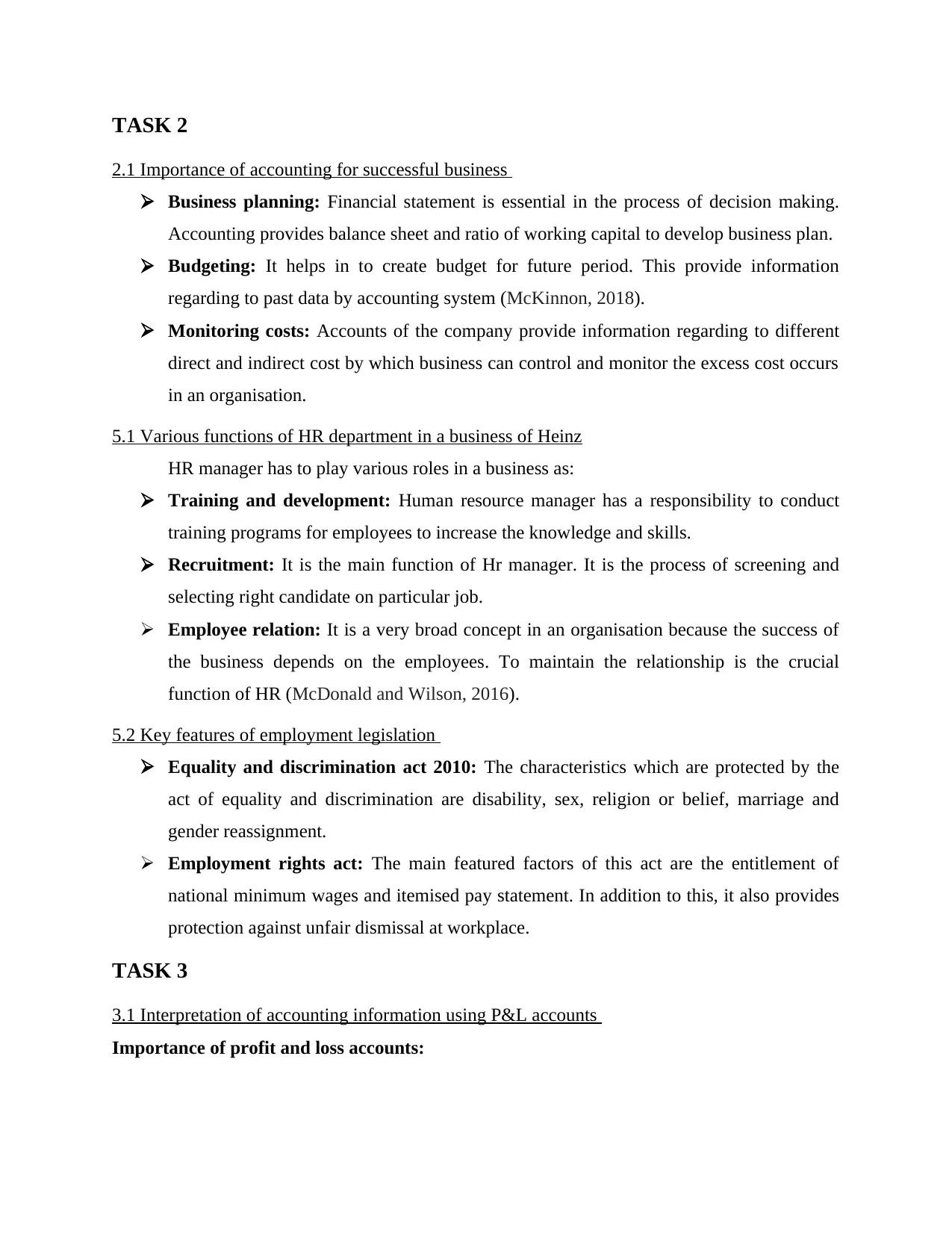
TASK 2
2.1 Importance of accounting for successful business
Business planning: Financial statement is essential in the process of decision making.
Accounting provides balance sheet and ratio of working capital to develop business plan.
Budgeting: It helps in to create budget for future period. This provide information
regarding to past data by accounting system (McKinnon, 2018).
Monitoring costs: Accounts of the company provide information regarding to different
direct and indirect cost by which business can control and monitor the excess cost occurs
in an organisation.
5.1 Various functions of HR department in a business of Heinz
HR manager has to play various roles in a business as:
Training and development: Human resource manager has a responsibility to conduct
training programs for employees to increase the knowledge and skills.
Recruitment: It is the main function of Hr manager. It is the process of screening and
selecting right candidate on particular job.
Employee relation: It is a very broad concept in an organisation because the success of
the business depends on the employees. To maintain the relationship is the crucial
function of HR (McDonald and Wilson, 2016).
5.2 Key features of employment legislation
Equality and discrimination act 2010: The characteristics which are protected by the
act of equality and discrimination are disability, sex, religion or belief, marriage and
gender reassignment.
Employment rights act: The main featured factors of this act are the entitlement of
national minimum wages and itemised pay statement. In addition to this, it also provides
protection against unfair dismissal at workplace.
TASK 3
3.1 Interpretation of accounting information using P&L accounts
Importance of profit and loss accounts:
2.1 Importance of accounting for successful business
Business planning: Financial statement is essential in the process of decision making.
Accounting provides balance sheet and ratio of working capital to develop business plan.
Budgeting: It helps in to create budget for future period. This provide information
regarding to past data by accounting system (McKinnon, 2018).
Monitoring costs: Accounts of the company provide information regarding to different
direct and indirect cost by which business can control and monitor the excess cost occurs
in an organisation.
5.1 Various functions of HR department in a business of Heinz
HR manager has to play various roles in a business as:
Training and development: Human resource manager has a responsibility to conduct
training programs for employees to increase the knowledge and skills.
Recruitment: It is the main function of Hr manager. It is the process of screening and
selecting right candidate on particular job.
Employee relation: It is a very broad concept in an organisation because the success of
the business depends on the employees. To maintain the relationship is the crucial
function of HR (McDonald and Wilson, 2016).
5.2 Key features of employment legislation
Equality and discrimination act 2010: The characteristics which are protected by the
act of equality and discrimination are disability, sex, religion or belief, marriage and
gender reassignment.
Employment rights act: The main featured factors of this act are the entitlement of
national minimum wages and itemised pay statement. In addition to this, it also provides
protection against unfair dismissal at workplace.
TASK 3
3.1 Interpretation of accounting information using P&L accounts
Importance of profit and loss accounts:
⊘ This is a preview!⊘
Do you want full access?
Subscribe today to unlock all pages.

Trusted by 1+ million students worldwide
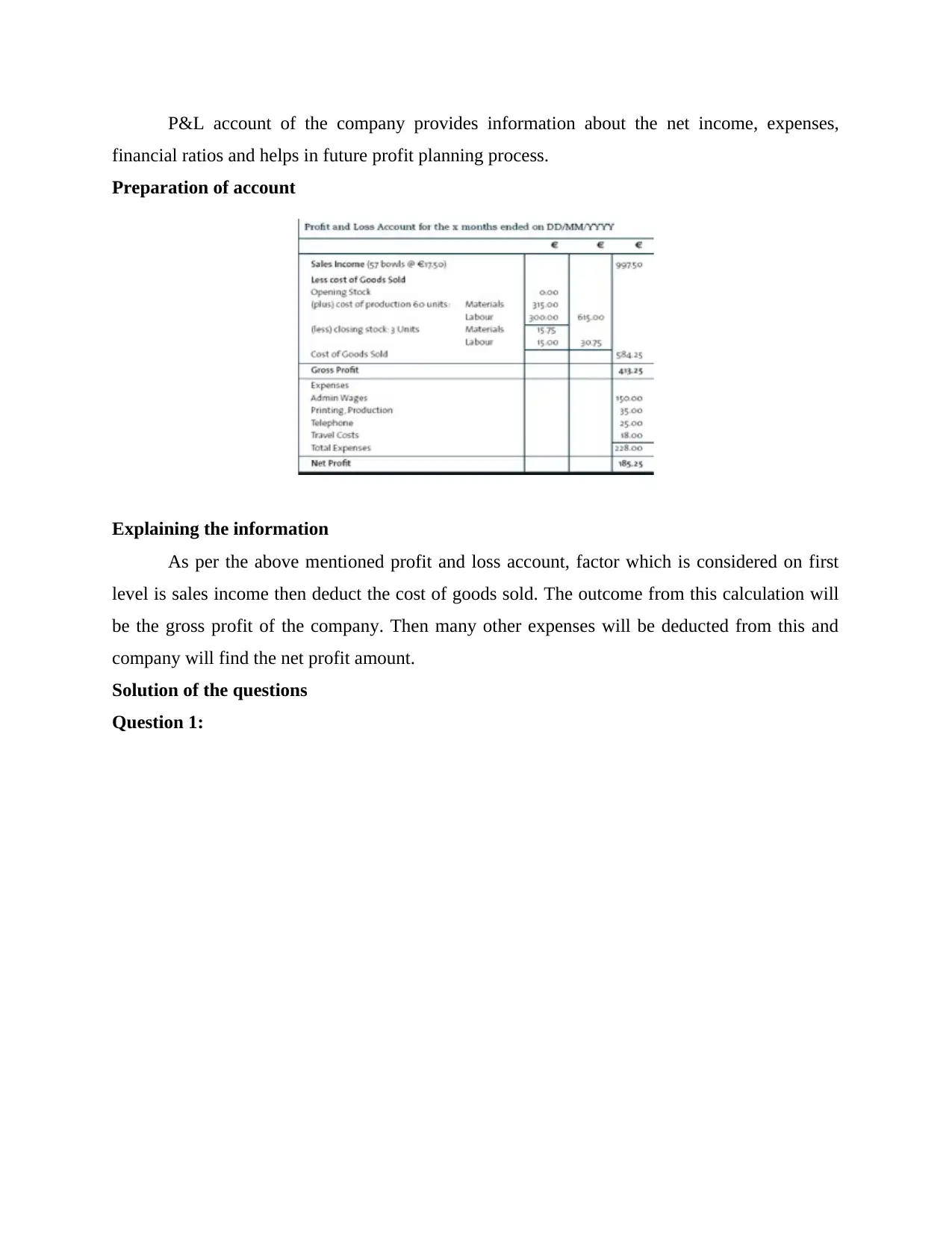
P&L account of the company provides information about the net income, expenses,
financial ratios and helps in future profit planning process.
Preparation of account
Explaining the information
As per the above mentioned profit and loss account, factor which is considered on first
level is sales income then deduct the cost of goods sold. The outcome from this calculation will
be the gross profit of the company. Then many other expenses will be deducted from this and
company will find the net profit amount.
Solution of the questions
Question 1:
financial ratios and helps in future profit planning process.
Preparation of account
Explaining the information
As per the above mentioned profit and loss account, factor which is considered on first
level is sales income then deduct the cost of goods sold. The outcome from this calculation will
be the gross profit of the company. Then many other expenses will be deducted from this and
company will find the net profit amount.
Solution of the questions
Question 1:
Paraphrase This Document
Need a fresh take? Get an instant paraphrase of this document with our AI Paraphraser
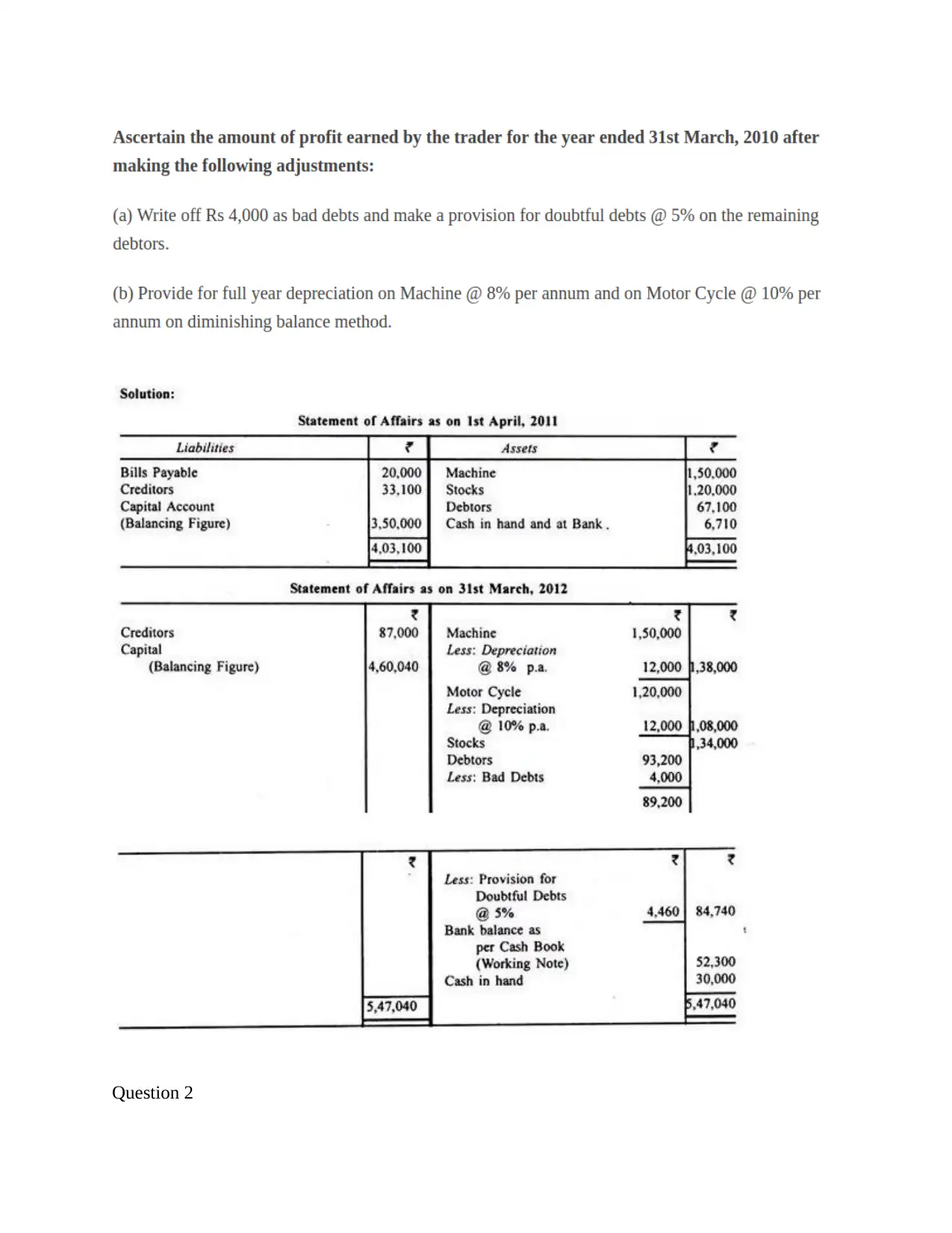
Question 2
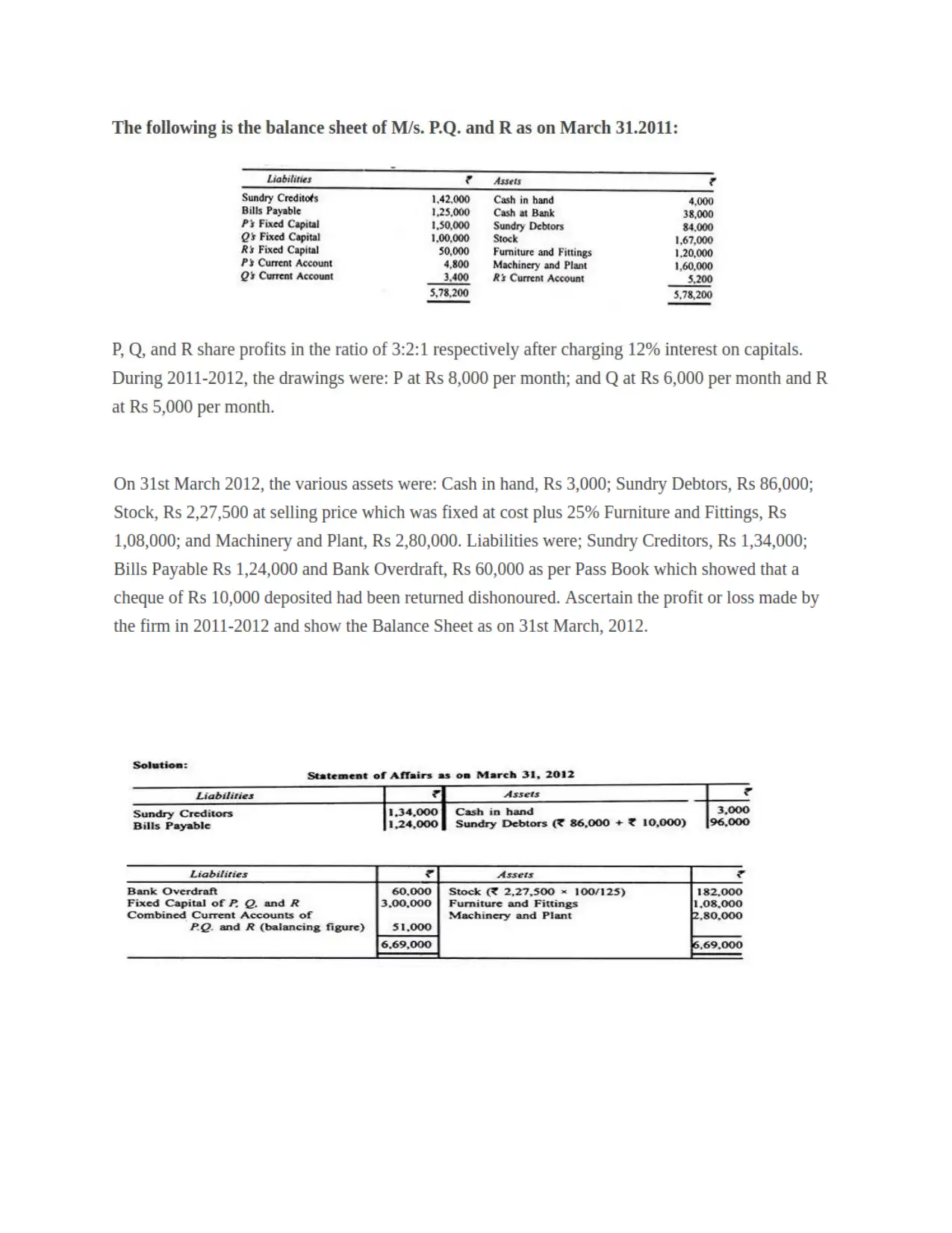
⊘ This is a preview!⊘
Do you want full access?
Subscribe today to unlock all pages.

Trusted by 1+ million students worldwide
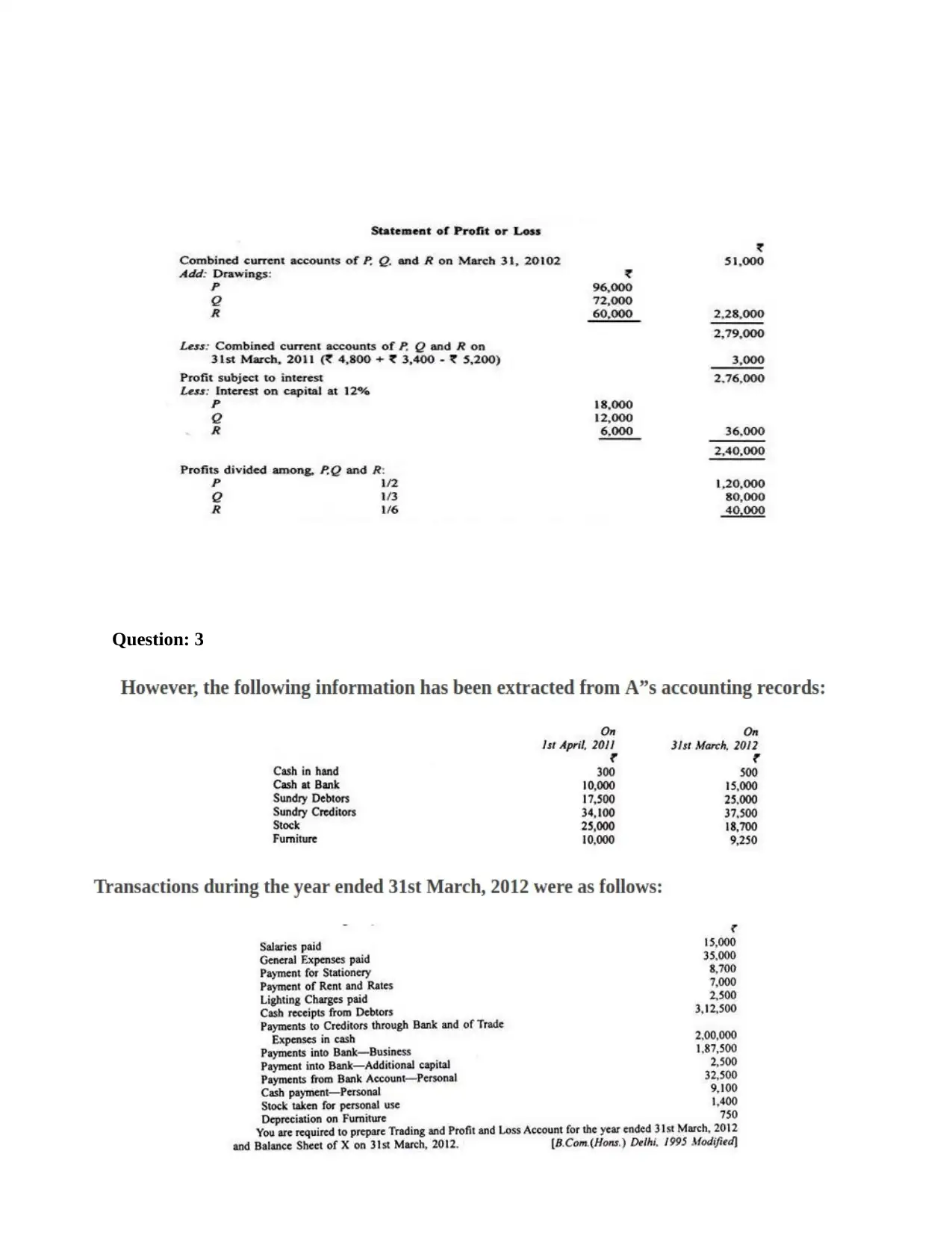
Question: 3
Paraphrase This Document
Need a fresh take? Get an instant paraphrase of this document with our AI Paraphraser
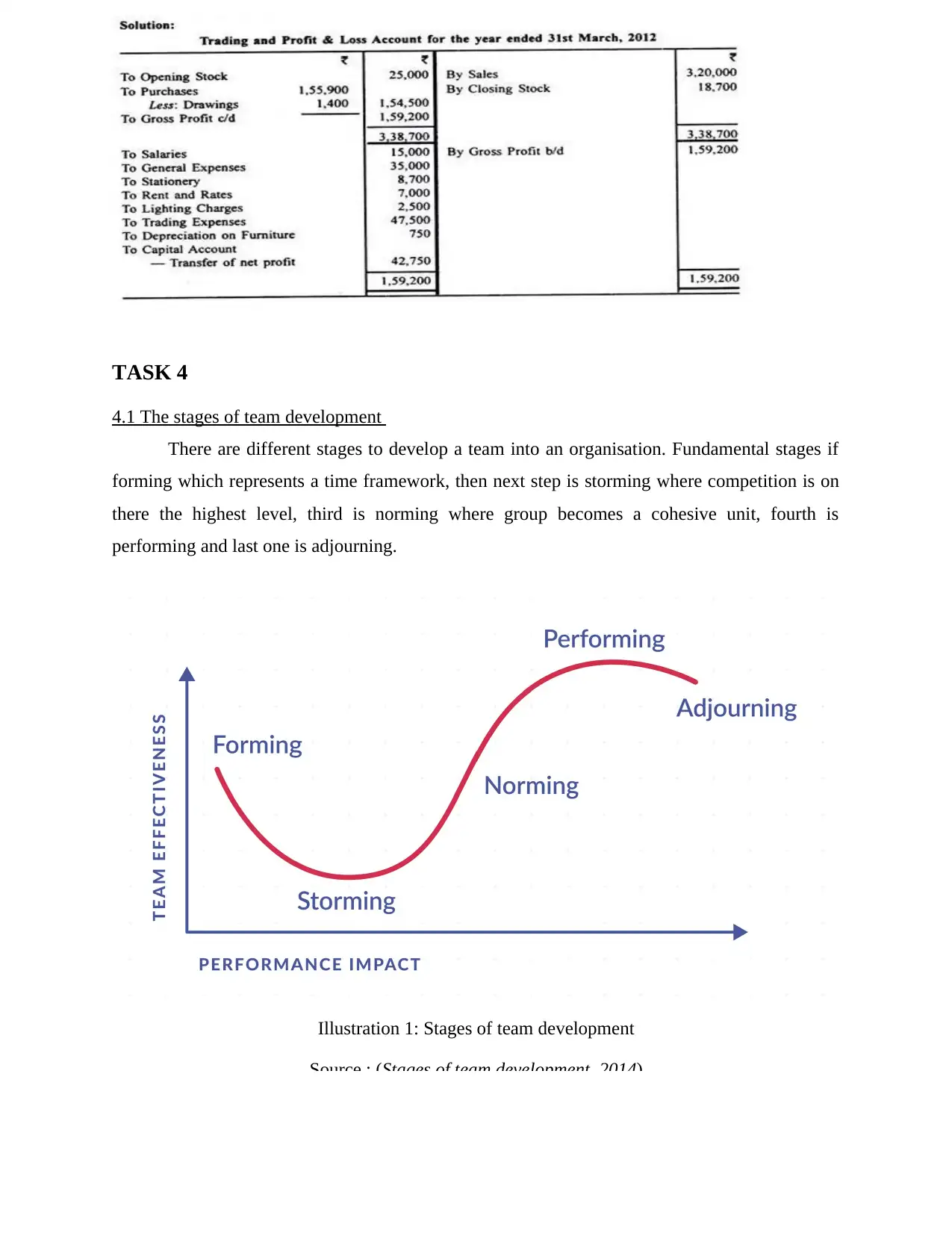
TASK 4
4.1 The stages of team development
There are different stages to develop a team into an organisation. Fundamental stages if
forming which represents a time framework, then next step is storming where competition is on
there the highest level, third is norming where group becomes a cohesive unit, fourth is
performing and last one is adjourning.
Illustration 1: Stages of team development
Source : (Stages of team development, 2014)
4.1 The stages of team development
There are different stages to develop a team into an organisation. Fundamental stages if
forming which represents a time framework, then next step is storming where competition is on
there the highest level, third is norming where group becomes a cohesive unit, fourth is
performing and last one is adjourning.
Illustration 1: Stages of team development
Source : (Stages of team development, 2014)
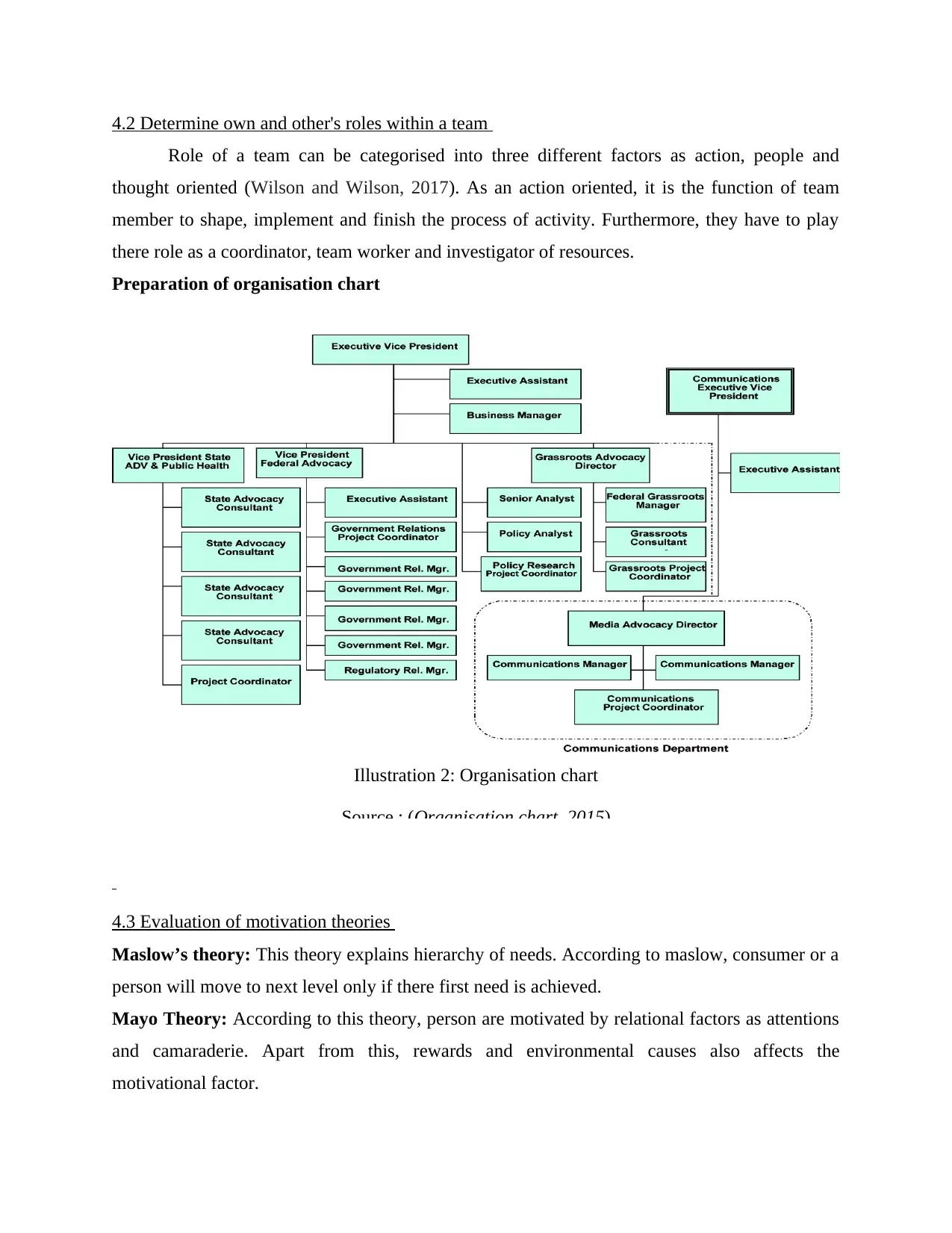
4.2 Determine own and other's roles within a team
Role of a team can be categorised into three different factors as action, people and
thought oriented (Wilson and Wilson, 2017). As an action oriented, it is the function of team
member to shape, implement and finish the process of activity. Furthermore, they have to play
there role as a coordinator, team worker and investigator of resources.
Preparation of organisation chart
4.3 Evaluation of motivation theories
Maslow’s theory: This theory explains hierarchy of needs. According to maslow, consumer or a
person will move to next level only if there first need is achieved.
Mayo Theory: According to this theory, person are motivated by relational factors as attentions
and camaraderie. Apart from this, rewards and environmental causes also affects the
motivational factor.
Illustration 2: Organisation chart
Source : (Organisation chart, 2015)
Role of a team can be categorised into three different factors as action, people and
thought oriented (Wilson and Wilson, 2017). As an action oriented, it is the function of team
member to shape, implement and finish the process of activity. Furthermore, they have to play
there role as a coordinator, team worker and investigator of resources.
Preparation of organisation chart
4.3 Evaluation of motivation theories
Maslow’s theory: This theory explains hierarchy of needs. According to maslow, consumer or a
person will move to next level only if there first need is achieved.
Mayo Theory: According to this theory, person are motivated by relational factors as attentions
and camaraderie. Apart from this, rewards and environmental causes also affects the
motivational factor.
Illustration 2: Organisation chart
Source : (Organisation chart, 2015)
⊘ This is a preview!⊘
Do you want full access?
Subscribe today to unlock all pages.

Trusted by 1+ million students worldwide
1 out of 15
Related Documents
Your All-in-One AI-Powered Toolkit for Academic Success.
+13062052269
info@desklib.com
Available 24*7 on WhatsApp / Email
![[object Object]](/_next/static/media/star-bottom.7253800d.svg)
Unlock your academic potential
Copyright © 2020–2025 A2Z Services. All Rights Reserved. Developed and managed by ZUCOL.



